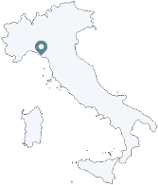- Decrees and Regulations
- Notices and Calls
- ECST Phase I
- Travel Suggestions
- Online documents
Home » Nature » National Park
Goals
- Centrality of the human element
- Centrality of the landscape structure
- Centrality of the area's wine production calling
The wine production was the main activity in the past, and besides the landscape it also characterized the social, cultural and economic structure of the residing populations; it characterized its deepest identity.
Then, following the technological revolution, the industrial activity replaced the agricultural one, and the consequence was the abandonment of the wine production activity in this easternmost part of east Liguria, making both the people and the territory undergo a deep transformation.
The National Park was established to be a tool to safeguard the territory of the Cinque Terre, an area that deeply changed over the centuries both in its geographical and morphological structure due to the human hard work.
The ancient inhabitants of these places, without any imposition by tyrannical sovereigns, but only for the need to obtain cultivable areas in a hostile environment, substituted the ancient natural vegetation of these steep slopes for a thick network of terraces cultivated with grapevine, supported by a 6,729 km long network of dry-stone walls.
© 2024 Parco Nazionale delle Cinque Terre
Via Discovolo snc - c/o Stazione Manarola
19017 Riomaggiore (SP) - CF 01094790118
Tel. +39 0187/762600 - Fax +39 0187/760040
Tourist information: infopoint@parconazionale5terre.it
PEC: pec@pec.parconazionale5terre.it
19017 Riomaggiore (SP) - CF 01094790118
Tel. +39 0187/762600 - Fax +39 0187/760040
Tourist information: infopoint@parconazionale5terre.it
PEC: pec@pec.parconazionale5terre.it





